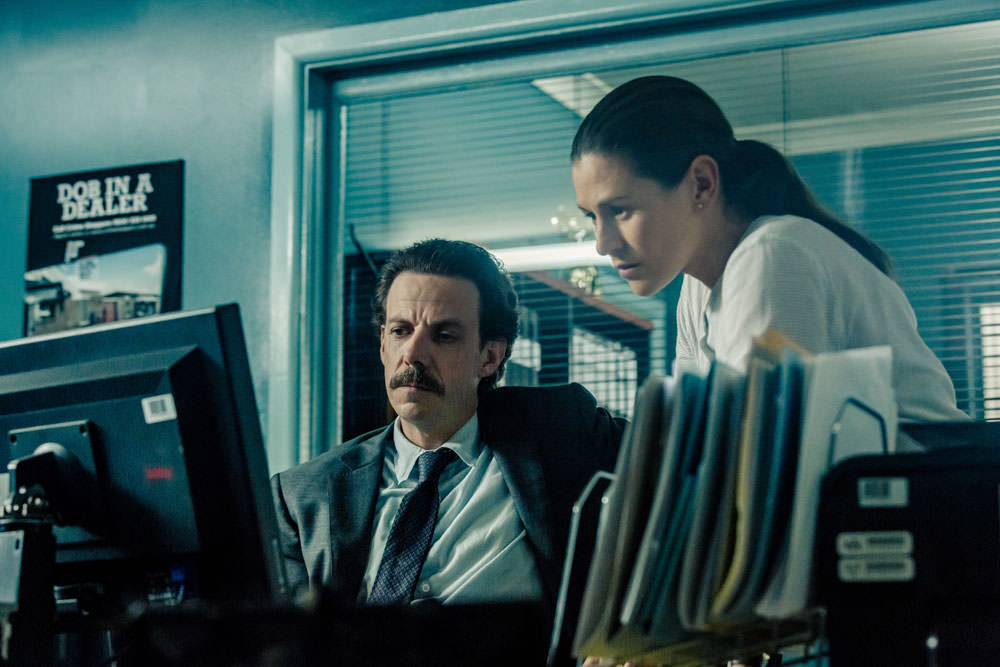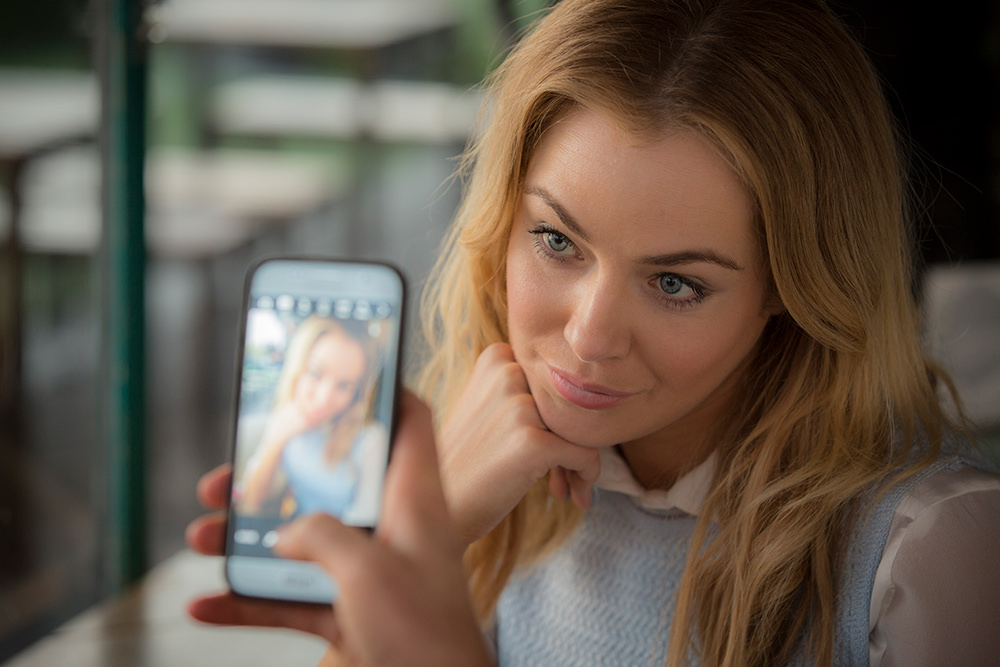TV dramas embracing the second screen
As The Wrong Girl and Deep Water hit screens Twitter’s Tony Broderick talks about the Screen Australia initiative helping these TV dramas.
 Deep Water/Sean O'Reilly
Deep Water/Sean O'Reilly
Had you been on Twitter on the evening of September 28, you would have noticed Network Ten’s new drama The Wrong Girl was trending, alongside the Dally M Awards and South Australia blackout concerns.
It’s not unusual to see a new TV series trending on Twitter – internationally, HBO’s Game of Thrones, Netflix’s Stranger Things and Australia’s own Foxtel drama Wentworth all feature in the platform’s most talked about topics with their own hashtags.
According to Twitter’s Head of Partnerships for news and TV, Tony Broderick*, it’s because Twitter is about connecting people with a shared event, whether that’s a breaking story, or a television broadcast.
“We never really intentionally designed Twitter as a second screen platform for broadcast TV. It kind of just happened of its own accord and it’s really about how at any moment or event which is a shared experience, people come together to discuss that,” he says.
“And what we’re also finding is that Twitter is just a great place to discover content and to find out what’s basically the most interesting and newest thing to watch and share.”
In Australia, he says Twitter has really been embraced by non-scripted programming in particular, whether it’s Q&A or the latest episode of The Bachelor.
“Australia is one of the earliest to adopt this, in that it realises essentially any show, even if it’s a pre-recorded series, can be turned into a live event – integrating the Twitter conversation either on air or providing just additional great content.”
For scripted Australian TV, the uptake has not been as organic as it has for reality TV, news and sport. And so Twitter and Screen Australia partnered for an initiative that has been guiding four projects to create a social media strategy for the platform.
“We really wanted to find a way to tap into the amazing storytellers and filmmakers here and take them through best practices from a really early stage,” he says.
“We kicked it off with Ambience Entertainment and ABC with Tomorrow When the War Began. Now we have this follow-up with The Wrong Girl, which is with Playmaker Media and Network Ten, and then we’ve got Deep Water with Blackfella Films and SBS.
“And what we’re tried to do across those first three projects (and we have a fourth unannounced), is we’ve tried to work across different genres, networks, producers, and audiences.
“What we’re really hoping from this initiative is both Screen Australia and Twitter can demonstrate how to integrate Twitter in a really slick way around genre and really spread that education around the industry.”
 Jessica Marais in The Wrong Girl/Greg Nookes
Jessica Marais in The Wrong Girl/Greg Nookes
A few takeaway lessons for filmmakers have already emerged from the initiative, which Broderick says filmmakers keen to utilise social media should be aware of:
1. Know your show
Twitter has a statistic that says about 70% of TV-related tweets are sent and viewed while the show is actually happening, but that’s for TV in general – including your dating shows and AFL matches.
Broderick says the pattern is different with scripted TV.
From their research, there are two types of TV drama that people tweet about.
House of Hancock
One is more relationship-driven drama, whether it’s a family drama such as Offspring, or a serial like Home and Away or Neighbours. “Or it could be a drama based on real life event, like a House of Hancock or a Schapelle, where (people) know what’s going to happen, but are interested in how that story is going to be told,” Broderick says.
In these shows, people can be tweeting while they’re watching because if they take their eyes from the screen momentarily they are less likely to miss a crucial piece of evidence that would crop up in a crime drama or the cryptic monologue from a House of Cards type-show.
“So they’re much more active during that conversation because they don’t need to keep their eyes so focused on the screen,” he says.
“On the flip side, a drama series with a lot more density and intensity, you may find the Twitter conversation sits more around commercial breaks or just near the end of episodes, unless something massive happens. They tend to check in when the show starts, gets a bit quieter during the episode and then check-in again at the end to debrief what’s just happened in a way that’s hopefully pretty spoiler free as well.”
Take The Wrong Girl and Deep Water, which Broderick says couldn’t have been more different.
One is an eight-part novel adaptation starring Jessica Marais as a morning TV show producer on The Breakfast Bar as she juggles her career and relationships.
The other is a four-part drama starring Yael Stone and Noah Taylor as detectives assigned to a brutal murder case, inspired by the true unexplained deaths of homosexual men in the 1980s and 1990s.
For The Wrong Girl the team have produced webisode series #AlicesWorld, where The Breakfast Bar social media producer Alice effectively takes viewers behind the scenes of the show within the show.
“It’s what a Twitter account for The Breakfast Bar would be producing if that was a real show,” he says, adding the approach is suited to the style.
“So you could say The Wrong Girl is one of those dramas where people can be a bit more chatty while the show is on.” This follows in the style of other Network Ten dramas like Offspring which become huge talking points on social media during and after broadcast.
However a different approach has been taken with Deep Water. For #DeepWater two Twitter accounts have been created – one for the show and another for Yael Stone’s character.
“They’re going to be pushing out real-time evidence as the episode unfolds. So with Deep Water, there’s a little less focus on video content, which would be distracting, and more on photos and GIFs of evidence that’s happening on screen,” he says, allowing viewers to deep-dive into the detail during ad breaks, but still be able to maintain their attention on the main show.
SBS have also created a Deep Water documentary and online interactive hub.
2. The early bird catches the worm
Broderick says you should be thinking about your social media strategies as early as possible – it will not only save you money, but give you greater reward.
“One of the biggest learnings we’ve had from this initiative is that effectively the earlier you can start in this process, the cheaper it is, and the more impactful it is,” he says.
“What’s been great about working with Screen Australia is that we obviously get to work with projects pretty much from when they’re greenlit and going into pre-production. If we were trying to build those relationships later in the process, it actually would almost be too late.
“By starting as early as possible you effectively can come up with an idea that makes sense for your genre, makes sense for your audience, makes sense for your story and your narrative, so you’re not trying to retrofit something.
“You can integrate it into your production schedule which means that it actually doesn’t take much extra time or too much extra cost to actually produce that content, but the quality of it is always a lot better.”
3. Take the wheel
Instead of handing over a finished product to a marketing team, having a social media strategy means filmmakers can be a part of the process – and even take the lead.
“It’s empowering for the storytellers as well, because they really get to be involved,” Broderick says.
“Content should be something that the producers feel proud to have made and by them having a really integral role early in the process it tends to work best for all partners involved.”
4. Get instant feedback and audience trust
The thing that separates Twitter from any other platform is how instantaneous it is, says Broderick.
“If you’re currently working on a production, make sure that when the show is on air you go onto Twitter, follow the show hashtag, and look at what the conversation is saying,” he says.
“You get that feedback live and in real-time which is something which I don’t know any other platform can do as quickly.”
And you can also build on it.
“If it’s something that’s live on air, running Q&As and actually talking direct to the audience is a really good way to engage with them and make them feel quite rewarded about being part of the process as well,” he says.
To see how The Wrong Girl and Deep Water are embracing Twitter follow the conversation through #TheWrongGirl, #AlicesWorld and from Wednesday October 5 at 8.30pm, @DeepWaterSBS and @ToriLustigman.
The Wrong Girl airs Wednesdays on Network Ten at 8.30pm, while Deep Water starts on SBS on Wednesday October 5 at 8.30pm. The feature documentary Deep Water – The Real Story airs on SBS on Sunday October 16.